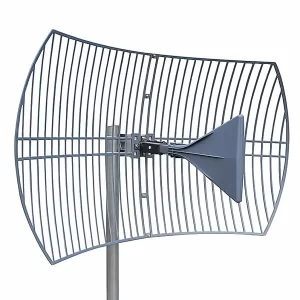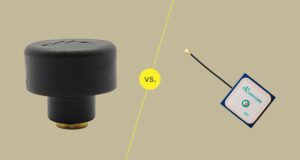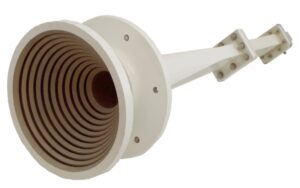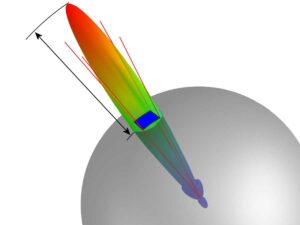Table of Contents
Signal Combination Basics
Waveguide combiners play a great role in signal strengthening and quality enhancement in many fields: telecommunications and operation of various types of radar. In regard to the latter, for instance, it is impossible to even imagine functioning without combining signals from many sources to achieve high output power. If each of the amplifiers outputs 20 watts, then, for example, combining four such signals using a waveguide combiner provides an impressive total output of 80 watts. Increased power is but one of the necessities of a long-range radar system, where the signal must degrade over distance. The improvement in signal strength might amount to 20%. For instance, that kind of increase can mean the detection range improves by only 4%, which indeed stretches a long way regarding operational capabilities.
The phase preservation aspect is another of the issues involved in waveguide combiners’ mechanism. Such control over the phase relationships allows very narrow and highly directed beams to be produced. A typical phased array system would consist of 16 elements acting together to form a coherent signal. Assuming each element produces a signal with a certain phase difference, say 10 degrees, the waveguide combiner must preserve these differences so that beam steering may be realized. The single percent deviation may result in lower signal gain, up to 30% in some situations, therefore catastrophically compromising the aptitude of the radar for tracking targets precisely.
Another major advantage using waveguide combiners involves reduction in crosstalk. In telecommunications, several channels are usually working concurrently; hence, much importation is based on integrity of signals. For instance, in a 12-channel combiner where all the channels are transmitting at 2.5 GHz, a very poorly designed combiner may result in crosstalk levels that exceed -30 dB. On the other hand, professional-grade waveguide combiners can maintain crosstalk at less than -50 dB, thus blocking interference that may cause the degradation of audio and video quality. For instance, for broadcasting stations, this level of performance is crucial in providing crystal-clear transmission to viewers’ expectations.
Another very important aspect concerning waveguide combiners is the efficiency achieved, especially in applications with high frequencies. For instance, a waveguide combiner applied in satellite communication at 10 GHz can realize more than 95% efficiency. This reflects that only 5% of the power in signal transit will be lost during the combining process. This puts traditional coaxial cable combiners at just an efficiency rate of about 80% at similar frequencies and thus makes a big difference in performance. Because it is over time that this efficiency will translate into cost savings both on power and equipment, waveguide combiners prove better in applications where signal strength is crucial to maintain.
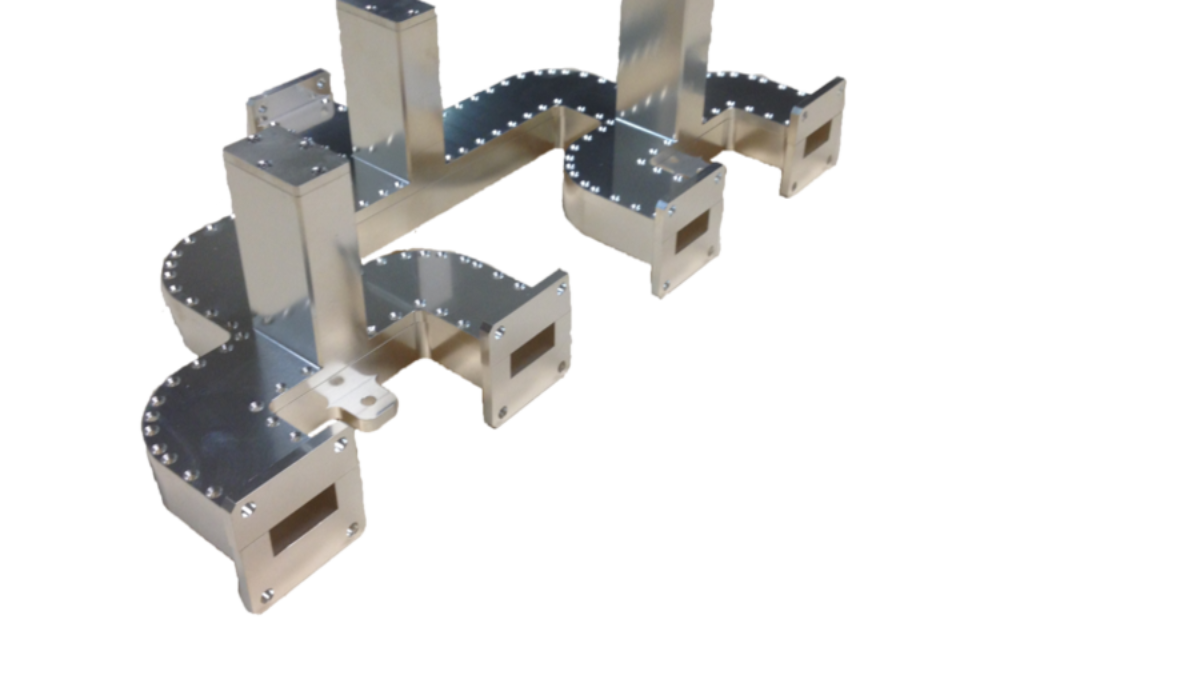
Power Amplification
Waveguide combiners were designed to provide an extremely important function in RF power amplification, especially in applications requiring high signal strengths. The output power may make all the differences between system performance and inefficiency, such as the detection range and resolution of a target in radar systems. There are normally several amplifiers used in a typical radar setup, with each amplifier contributing an output of approximately 30 watts. Using a waveguide combiner, the outputs of four such amplifiers can be combined, therefore yielding a total output power of 120 watts. This significant increase in power can correspond to an improvement in detection range of 20%, and hence allow radar systems to detect targets well before they can pose any danger. For example, if a system can detect objects up to 100 kilometers away, then with more power, detection is possible over distances greater than 120 kilometers.
Also, the efficiency of the waveguide combiners is a factor that determines the output in terms of overall system performance. In good-quality waveguide combiners, typical ratings on efficiency easily exceed 90% upwards. If, for instance, in a practical scenario, when a total combining power of 120 watts was done through an inefficient combiner that had 80% efficiency, the effective power delivered would be only 96 watts. This loss severely reduces the performance of sensitive systems, such as satellite communications, which greatly rely on high power levels to give clear signal transmission. Compared to that, an inefficient combiner would reduce the quality of the signal and increase latency or dropout—a factor that is totally undesirable in critical applications.
Equally important in telecommunications is power amplification. The power consumed by a cellular base station ranges between 20 to 100 watts or more, depending on the coverage area and the quality of communication. On the other hand, if three or four high-power amplifiers are combined using waveguide combiners, then the output from the base station will be much higher without much loss in signal integrity. For example, three amplifiers with an output of 50 watts each can give an output of 150 watts combined from a waveguide. This higher power can extend the coverage area many times, and the estimated increase in power of 10% might be able to enhance the coverage by about 5%. In this way, waveguide combiners are helpful for cellular networks through high demand for data transmission and at the same time ensure a robust connection to users.
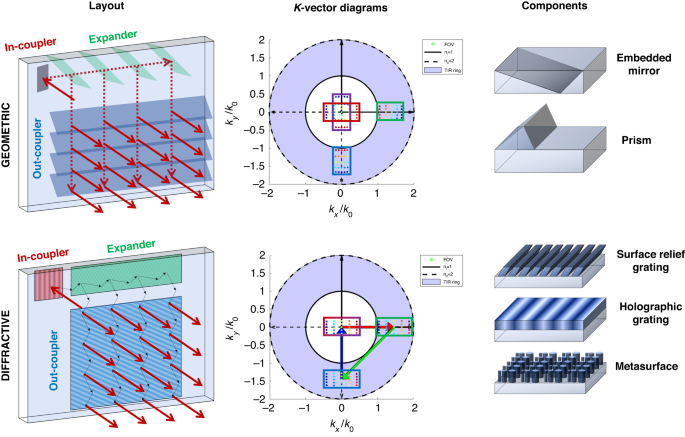
Phase Matching Explained
Therefore, waveguide combiners necessarily consider matching in phase such that more than one signal source is combined, particularly in applications where coherence of the signals at desired phase relationships is important. In both radar and communication systems, phase relations can be critical in determining the type of an outcome one wants to achieve; be it an improved directionality or increased resolution. For instance, a phased array radar system combines energy from many antennas into a beam of energy. Assuming each antenna emits a signal that is 30 degrees out of phase from the others, the waveguide combiner has to maintain these phase relationships quite precisely, since destructive interference could yield reductions in signal strength by as much as 50% in some cases.
To further help illustrate this, consider the following practical example involving a phased array radar system with 16 individual antenna elements. Each element can produce a signal of specified phase that sums to determine the beam direction. If the system is designed to steer a beam to 45, then the phase between each element should be appropriately set. In the example shown below, if the wavelength of the signal is 10 cm, there should be roughly a 5-cm (half-wavelength) phase shift between elements. Such phase control allows the system to steer a beam with much better performance, without any unwanted side lobes or loss of gain. If matching of phase does not occur effectively, effective range and resolution of the radar could be reduced, potentially leading to reduced accuracy in target detection by 20% or greater.
In addition, phase matching is crucial in communication systems to preserve the integrity of the combined signals. In particular, in such applications as MIMO—which stands for Multiple Input Multiple Output, used by wireless networks nowadays. A typical MIMO system with a certain number of transmit and receive antennas should maintain relationships between signal phases to maximize the system throughput. This would mean, for instance, that signals sent from a 4×4 MIMO system simultaneously arrive with the appropriate phase to realize constructive interference. Often, when this signal is off by only a few degrees, the effects of destructive interference can lead to up to a 15% decrease in overall system throughput. Waveguide combiners ensure that the phases match, thereby fully exploiting the multiplexing gain of MIMO technology.
Matching the phases will have a consequence for even optical applications; for example, waveguide combiners are also exploited in optical applications for routing and combining signals in fiber optic systems where phase coherence is of great essence in minimum signal degradation. For instance, a phase mismatch could potentially cause signal distortion in the waveguide combiner used in combining signals from multiple fibers in a fiber optic communication network. Since combining signals with more than 10-degree phase differences causes a noticeable deterioration in the signals due to the signal overlaps, the estimated increase in the bit error rates is as high as 30%. Waveguide combiners will ensure the phases of the incoming signals precisely match and, hence, allow high-quality long-distance transmission of signals, which is of utmost importance for modern communication infrastructures.
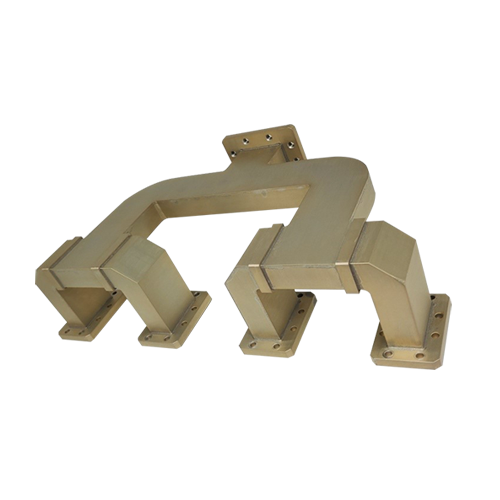
High Power Handling
One feature characterizing waveguide combiners is high power handling capacity; hence, they are indispensable in several applications that require effective signal transmission with minimal or no loss. For example, in radar systems, the high power handling level determines the range and accuracy of target detection. A military radar system can effectively require up to 10 kW of peak power output. If many different sources are utilized for input signals, the power combiners in waveguide forms aggregate the power generated from various amplifiers operating with outputs of 2 kW. With a waveguide combiner, an engineer will be able to ensure that adding a total of 10 kW output from an application will not lose integrity due to signal interference. Consequently, increasing power contributes directly to an expanded range of detection, enabling the detection of objects at distances greater than 250 kilometers, where lesser configurations permit only objects at a distance of about 200 kilometers.
Waveguide combiners are designed and constructed in such a manner that they allow high power levels, which is vital in satellite communication. During a satellite communication link, the power level can be required continuously at approximately 400 watts to maintain the quality of a clear signal. The waveguide combiner is designed to handle a power surge up to 1 kW, making it sure that at any time of peak demand, the system remains stable and the risk of signal distortion is diminished. In such instances, for example, if a satellite experiences increased demands in terms of the signal during live broadcasts, the waveguide combiner handles spikes in power smoothly, ensuring the service remains uninterrupted. This can raise the reliability of communication by as much as 30% because there is less likelihood for any form of signal dropout or interference.
High power handling has to do with how efficiently the waveguide combiners handle power. Power handling efficiency could very well be described as one of the main aspects of a waveguide combiner in use for high-frequency applications. In most high-frequency applications, the efficiency of power handling in waveguide combiners is usually between 90% and 95%. A waveguide combiner at 10 GHz, for instance, can have an output power handling capability of 5 kW. An efficiency of 85% means that the actual usable power is only 4.25 kW. In practice, this is very important for applications like broadcast television because a strong signal ensures quality reception. A drop in power output due to a loss in efficiency can lead to a drop in the range over which that broadcast is transmitted and may impact the viewing for thousands of viewers who depend on signals, most especially in rural areas.
Crosstalk reduction is one of the very important functions of waveguide combiners, especially in situations where there are several signals operating close to each other. Such interference between the channels may degrade the signal quality, which is much more troublesome in telecommunication and broadcasting systems. In a normal television broadcasting scenario, several channels operate concurrently at frequencies that may only be a few MHz apart. When the levels of crosstalk exceed -30 dB, observable interference may be experienced by viewers, hence pictorial and sound quality will deteriorate. Good-quality waveguide combiners reduce crosstalk below -50 dB, thus leaving the integrity of each channel intact for much clearer viewing.
In radar, many signals are processed simultaneously, which is quite prone to high levels of crosstalk, therefore leading to significant degradation in performance. For example, a radar system working on 16 channels, each at microwave frequencies, should be designed so that the signals at each channel do not interfere with each other. Even low crosstalk as small as -20 dB will yield faulty readings by reducing as much as 25% of target detection capability. Waveguide combiners designed against low crosstalk will allow radar systems to maintain clarity in signals. The crosstalk level can be as low as -60 dB with advanced designs, thereby increasing the accuracy of target detection and the reliability of the system by an order of magnitude. In practical terms, this can be the difference between accurate target tracking at 300 kilometers or misidentifying it at only 250 kilometers.
Data communication systems, especially those using dense wavelength division multiplexing (DWDM) technology, greatly rely on the reduction in crosstalk to be able to maintain high data throughput. The DWDM systems support multiple data streams over one optical fiber. In most cases, the channel spacing is down to 50 GHz. If the crosstalk is above -30 dB, it would cause many data losses. It would decrease the throughput and delay the system. Therefore, waveguide combiners that have minimal crosstalk would enable these systems to work efficiently, making it fall below -40 dB. This level of performance ensures high capacity links can maintain data rates over 100 Gbps without significant degradation and ensure the technology is applicable in modern telecommunications networks.
Thirdly, in microwave and RF applications, like in wireless communications, the disruptive effect of crosstalk on the quality of service can be significant. Where a system uses more than one antenna for MIMO technology, low crosstalk is critical in reaching maximum throughput. It has been determined that crosstalk levels of greater than -20 dB in MIMO systems lead to as much as 30% throughput degradation. By utilizing high-quality waveguide combiners, it is achievable for crosstalk levels to be around -50 dB. This allows the system to perform at optimal levels and makes full utilization of the benefits of multiplexing that can be achieved by transmitting the signals simultaneously.
Crosstalk Reduction
Crosstalk reduction is one of the very important functions of waveguide combiners, especially in situations where there are several signals operating close to each other. Such interference between the channels may degrade the signal quality, which is much more troublesome in telecommunication and broadcasting systems. In a normal television broadcasting scenario, several channels operate concurrently at frequencies that may only be a few MHz apart. When the levels of crosstalk exceed -30 dB, observable interference may be experienced by viewers, hence pictorial and sound quality will deteriorate. Good-quality waveguide combiners reduce crosstalk below -50 dB, thus leaving the integrity of each channel intact for much clearer viewing.
In radar, many signals are processed simultaneously, which is quite prone to high levels of crosstalk, therefore leading to significant degradation in performance. For example, a radar system working on 16 channels, each at microwave frequencies, should be designed so that the signals at each channel do not interfere with each other. Even low crosstalk as small as -20 dB will yield faulty readings by reducing as much as 25% of target detection capability. Waveguide combiners designed against low crosstalk will allow radar systems to maintain clarity in signals. The crosstalk level can be as low as -60 dB with advanced designs, thereby increasing the accuracy of target detection and the reliability of the system by an order of magnitude. In practical terms, this can be the difference between accurate target tracking at 300 kilometers or misidentifying it at only 250 kilometers.
Data communication systems, especially those using dense wavelength division multiplexing (DWDM) technology, greatly rely on the reduction in crosstalk to be able to maintain high data throughput. The DWDM systems support multiple data streams over one optical fiber. In most cases, the channel spacing is down to 50 GHz. If the crosstalk is above -30 dB, it would cause many data losses. It would decrease the throughput and delay the system. Therefore, waveguide combiners that have minimal crosstalk would enable these systems to work efficiently, making it fall below -40 dB. This level of performance ensures high capacity links can maintain data rates over 100 Gbps without significant degradation and ensure the technology is applicable in modern telecommunications networks.
Thirdly, in microwave and RF applications, like in wireless communications, the disruptive effect of crosstalk on the quality of service can be significant. Where a system uses more than one antenna for MIMO technology, low crosstalk is critical in reaching maximum throughput. It has been determined that crosstalk levels of greater than -20 dB in MIMO systems lead to as much as 30% throughput degradation. By utilizing high-quality waveguide combiners, it is achievable for crosstalk levels to be around -50 dB. This allows the system to perform at optimal levels and makes full utilization of the benefits of multiplexing that can be achieved by transmitting the signals simultaneously.
Efficiency Benefits
Efficiency is one important fact relating to waveguide combiners, particularly at high-frequency operations where the power losses have a considerable impact on the entire performance of the system. The main benefits derived from waveguide technology concern the attainment of high efficiency levels that may rise above 90%. As an example, a microwave communication system operating at a frequency of 10 GHz may have a waveguide combiner with an efficiency as high as 95%. That means, for an input power of 100 watts, the output power can effectively reach up to 95 watts, while there is a negligible loss in power. In comparison, older coaxial combiners might achieve efficiencies of only about 80% at similar frequencies—leading to the possible loss of 20 watts in the same scenario. The reduced power loss equates to increased system performance and, consequently, lower operational costs over time; hence, waveguide combiners are more economical in high-demand applications.
Besides power efficiency, waveguide combiners contribute toward thermal efficiency. High-frequency systems usually generate a lot of heat, which can lead to the failure of components or reduced performance if it’s not managed properly. Waveguide technology effectively dissipates heat due to its design by allowing for increased airflow, thus cooling. For instance, the capabilities of high power operation in a radar system allow the creation of the most favorable thermal conditions resulting in at least 30% improvement of component lifetimes. Besides increasing the lifetime of the operation, waveguide combiners reduce maintenance costs related to worn-out components that are replaced to minimize overheating.
Among other very important features of waveguide combiners, it should be underlined that they are ready to operate with very high power levels and with a very small distortion. It means that in broadcast applications, for instance, a clean signal is critical in providing quality audio or video. On the other hand, this may mean that a waveguide combiner can realize an efficiency of as much as 90% if a television transmitter needs 5 kW of output power. In case the combiner only introduces the 10% loss, the effective output will still be 4.5 kW, sufficient to maintain a strong and clear broadcast over very long distances. This is a very critical efficiency since any drop in output power may mean a reduced broadcast range that could impact thousands of viewers in remote areas.
Further, the efficiency of an integrated system as a whole would be expected to increase when waveguide combiners were set up within larger systems, such as phased array radar systems. These systems do usually employ multiple antennas that must operate cohesively in generating a coherent signal. For applications of this nature, if one were combining outputs from, say, 16 antennas operating at 1 kW each, a well-designed waveguide combiner could achieve an efficiency of around 95%, its effective output being roughly 15.2 kW. This would ensure high efficiency, maintaining the combined signal strong enough to perform long-range detection and tracking operations without excessive energy consumption. This will enable operators to save much energy; the costs for power consumption might be reduced by as high as 25% after some time.
Common Applications
Waveguide combiners have been applied in various industries in a number of applications due to their efficiency in high frequency and minimal signal loss. Probably the most commonly used application is in the radar systems where the signals from a number of sources need to be combined for better detection purposes. For example, military radar systems would normally be designed to have four or more radar antennas combined together to scan across a target area at extreme distances. A waveguide combiner takes such a combination of signals from those antennas and increases the general output power from 5 kW up to 20 kW or even higher. This consequently enhances the detection range, wherein the capability of the radar can recognize targets more than 300 kilometers away, which is necessary in early warning systems and air defense applications.
Another major area of application for waveguide combiners is in the area of satellite communications. Satellites use very high-frequency signals to send data back to Earth, and the integrity of these signals is highly critical for effective communication. A typical satellite communications link might employ frequencies as high as about 14 GHz for uplink transmissions. It is not atypical to see such a system taking the output of numerous high-power amplifiers and using waveguide combiners, enabling combined outputs of 1 kW or higher. These must achieve efficiencies of better than 90% in order to maintain clarity and signal strength significant for video in high definition and data services. It can, for instance, be claimed by a satellite operator that the signal sent from the satellite to a ground station is strong enough for data rates above 10 Gbps required by applications such as broadcasting and internet services.
Waveguide combiners also play a crucial role in telecommunications. Probably one of the most important usages of waveguide combiners in telecommunications is cell tower applications. Most modern cellular networks normally make use of various antennas in operation for better coverage and a larger amount of data by the use of techniques such as MIMO (Multiple Input Multiple Output). A cell tower configuration with four antennas, each capable of putting out 20 watts of power, can be combined up to 80 watts of power using a waveguide combiner. This increased power extends the coverage area, enabling the operators to deliver the service to larger populations of subscribers. Moreover, good signal strength in each and every nook and cranny in urban locations could decrease the rate of call drops by around 15%, due to high competition for bandwidth, while customers enjoy superior mobile experience.
Waveguide combiners are used in industrial microwave applications for improving processes related to food items, curing materials, or producing chemicals. The microwave heating system in a food processing plant, for instance, would require an output of 3 kW for efficient cooking or sterilization. It would be achievable through using a waveguide combiner to aggregate several magnetron outputs into one and reach the needed power while keeping the heating uniform. A 1-kW three-magnetron configuration is possible with less loss to produce 3 kW, that will reduce processing times by at least 25% over and above that for conventional heating, which then again reduces the processing time and generates considerable savings in energy to keep the process as cost-effective as possible with large-scale operations.

